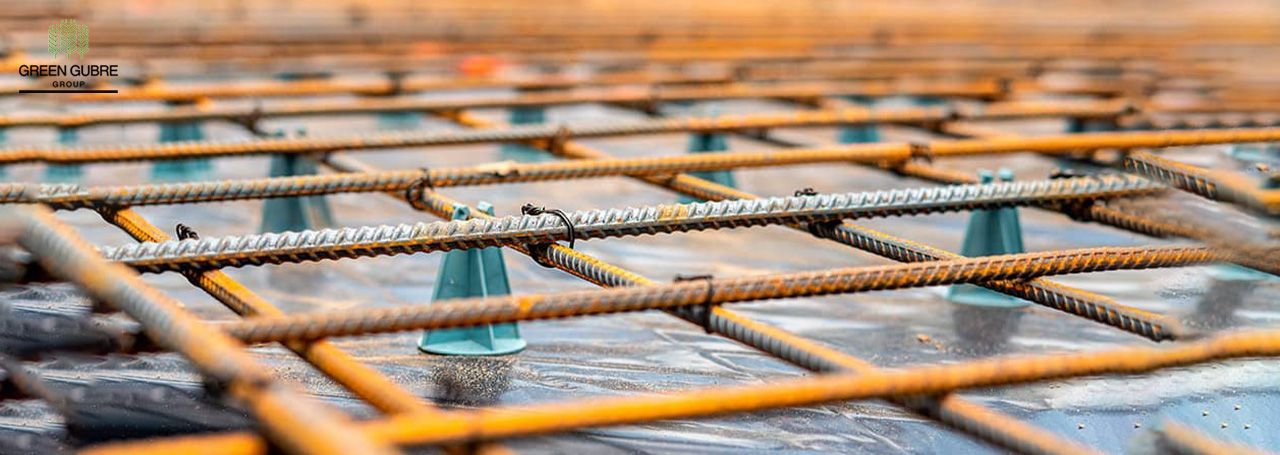The Importance of Rebars in Construction
The Importance of Rebars in Construction

Rebars, also known as reinforced bars, are steel rods or mesh of steel wires used in reinforced concrete and masonry structures to strengthen and hold the concrete in tension. As concrete is strong in compression but weak in tension, rebars are used to enhance the tensile strength of concrete, making them indispensable in modern construction projects. This blog delves into the role of rebars in construction, their benefits, and why they are vital to ensuring the durability and stability of infrastructure.
What Are
Rebars?
Rebars are steel bars that are used to reinforce concrete structures. They come in various grades, sizes, and types, depending on the requirements of the project. Rebars are typically ribbed or deformed, which helps them bond better with concrete. The combination of steel rebars and concrete creates a composite material that can withstand a variety of stresses, making it ideal for use in large-scale infrastructure projects such as bridges, buildings, dams, and highways.
Types of Rebars:
1. Mild Steel Rebars:
Mild steel rebars are made from low-carbon steel and are used in structures that do not require high tensile strength. They are known for their ease of bending and cutting, making them suitable for simpler projects.
2. Deformed Rebars:
Deformed rebars have a ribbed surface that helps improve the bonding with concrete, enhancing the overall strength of the structure. They are commonly used in large construction projects that require high durability and strength.
3.
Stainless Steel Rebars:
Stainless steel rebars are corrosion-resistant and are used in structures exposed to harsh environments, such as marine structures, bridges, and wastewater treatment plants. While more expensive than traditional rebars, they provide long-term durability and reduced maintenance costs.
4. Epoxy-Coated Rebars:
Epoxy-coated rebars are coated with a layer of epoxy to protect them from corrosion. These rebars are commonly used in environments where the concrete structure is exposed to moisture or chemicals, such as in marine or coastal areas.
5. Welded Wire Mesh:
Welded wire mesh is a grid of steel wires welded together to form a mesh. It is often used in slabs, pavements, and walls to provide additional reinforcement.
Key Benefits of
Rebars in Construction:
1. Increased Tensile Strength:
Concrete is naturally weak in tension but strong in compression. By adding rebars to concrete, the structure’s tensile strength is significantly improved. This helps the concrete withstand forces such as bending, stretching, and twisting, ensuring the overall stability and integrity of the structure.
2. Enhanced Durability:
Rebars help extend the lifespan of concrete structures by making them more resistant to cracking and deformation. This is particularly important in structures exposed to high loads or harsh environmental conditions, where durability is a top priority.
3. Cost-Effective Reinforcement:
Rebars are a cost-effective solution for reinforcing concrete. They allow for the construction of large, complex structures without the need for expensive, high-strength concrete. The combination of rebars and concrete offers a strong and affordable building material for various construction projects.
4. Corrosion Resistance:
With the use of epoxy-coated or stainless steel rebars, structures can be built to resist corrosion from environmental factors such as moisture, saltwater, and chemicals. This is essential for long-lasting durability in infrastructure exposed to harsh conditions.
5. Flexibility and Versatility:
Rebars are easy to bend and shape, making them adaptable for use in various construction applications. Whether used in high-rise buildings, bridges, or residential projects, rebars can be tailored to meet the specific needs of each construction project.
Applications of
Rebars:
1. Building Foundations and Beams:
Rebars are commonly used in the foundations of buildings to provide strength and stability. They are also used in beams and columns to reinforce the structure, ensuring it can bear the weight of the building and withstand external forces such as earthquakes or high winds.
2. Bridges and Infrastructure:
Bridges, highways, and other large infrastructure projects rely on rebars to provide tensile strength and durability. The combination of rebars and concrete allows these structures to endure heavy loads and harsh environmental conditions.
3. Marine Structures:
Structures exposed to water, such as docks, piers, and seawalls, require additional protection against corrosion. Stainless steel or epoxy-coated rebars are often used in these projects to ensure long-term durability and resistance to saltwater.
4. Dams and Water Treatment Plants:
Rebars are used in dams and water treatment plants to reinforce concrete walls, slabs, and tanks. These structures must be able to withstand the pressure of large volumes of water, making the use of high-quality rebars essential.
5. Residential and Commercial Buildings:
Rebars are also used in the construction of residential homes, apartment buildings, and commercial properties. They help strengthen walls, floors, and roofs, ensuring the safety and longevity of the structure.
Environmental Impact of
Rebars:
While steel production has traditionally been energy-intensive, advancements in technology have led to more sustainable production methods. Recycled steel is increasingly being used to manufacture rebars, reducing the environmental impact of the construction industry. Additionally, the use of long-lasting, corrosion-resistant rebars helps minimize the need for repairs and replacements, contributing to more sustainable building practices.
Global Demand for
Rebars:
As urbanization and infrastructure development continue to grow worldwide, the demand for high-quality rebars remains strong. In developing countries, the need for new infrastructure, housing, and commercial developments is driving the demand for reinforced concrete, while in more developed nations, the focus is on upgrading and maintaining existing infrastructure. Rebars play a critical role in both scenarios, ensuring the stability, strength, and longevity of concrete structures.
Conclusion:
Rebars are essential components in modern construction, providing the tensile strength and durability needed to support large-scale infrastructure projects, buildings, and other concrete structures. Whether used in foundations, beams, bridges, or marine structures, rebars ensure the integrity and safety of construction projects. As demand for durable, cost-effective, and sustainable construction materials continues to grow, rebars will remain a cornerstone of the industry. Learn more about our range of high-quality rebars designed for various construction applications on our dedicated product page.




